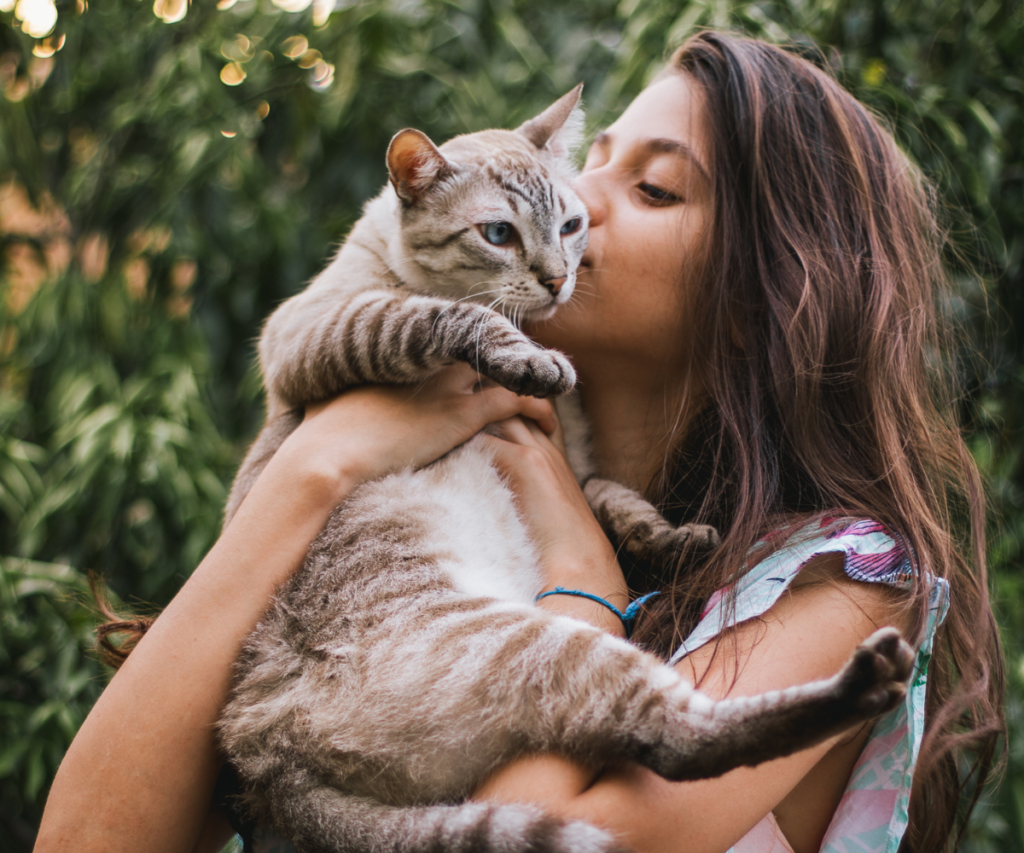Can Cats Understand English or Other Human Languages?
Domestic cats, with their independent and mysterious nature, have always intrigued their human companions. One question often asked by cat owners and enthusiasts is whether our feline friends can understand human language, specifically English words.
While it’s clear that cats aren’t capable of engaging in a verbal conversation with us, the extent of their comprehension of our language is a topic that warrants exploration.
Grab the Puuurrr-fect Planner to keep track of your cat’s health and well-being ON SALE NOW!
This article delves into the fascinating subject of feline linguistic understanding, providing insights based on scientific research and observations.
Do Cats Understand Human Language?
Cats, unlike humans, aren’t equipped with the cognitive ability to comprehend human words in their full complexity. That being said, claiming they have no understanding is not entirely accurate.
Like many other pets, cats can learn to associate certain sounds or phrases with specific outcomes or behaviors through conditioning.
For instance, a cat might recognize its name or the word “treat” because of the positive experiences associated with these words.

Scientific studies lend support to this observation. A Japanese study conducted in 2013 demonstrated that cats can distinguish their names from other random different words, indicating some level of linguistic comprehension.
Additionally, a 2019 new study published in the journal “Nature” revealed that cats can recognize their owner’s voice, further emphasizing their ability to associate certain sounds with specific individuals or outcomes.
However, these studies do not suggest that cats can understand human communication like we do.
They merely highlight a cat’s ability to recognize certain sounds and associate them with specific outcomes, a far cry from understanding syntax, grammar, or the nuances of language.
How Many Words Do Cats Understand?
Estimating the number of words a cat can understand is challenging due to the limitations in our ability to communicate with them.
However, we can make an educated guess from what we know about feline cognition and through anecdotal reports from pet owners.
According to Dr. John Bradshaw, a cat behavior expert, household cats might be able to understand somewhere between 20 to 40 words.
These particular words are usually associated with their daily routine, such as “food,” “play,” or “bed.” It’s essential to understand that cats are more likely to respond to the tone and volume of your voice rather than the actual words used.
Therefore, while it may seem like your cat understands you when you speak, it’s likely that they are simply reacting to your tone and body language. Remember, every cat is unique, and their understanding can vary based on their capacity and interaction with human beings.
This is a fascinating area of ongoing research, and our understanding of feline cognition continues to evolve.
Do Cats Know Their Names?
Adult cats do seem to recognize their own names. As mentioned earlier, scientific reports conducted by Japanese researchers have provided evidence for this. In this experiment, house cats were played recordings of four different nouns followed by their own name.
Many cats responded better (like moving their ears or heads) to their names, even when spoken by someone unfamiliar. This suggests that cats may have a certain level of name recognition.
However, it’s important to note that cats responding to their names doesn’t mean they understand the concept of a name like humans do.
Rather, they likely associate the sound of their name with certain outcomes, such as rewards or activities. The same principle applies to commands or phrases they appear to understand, like “dinner time.”

The key is consistently pairing a cat’s name with positive experiences. This way, your furry friend will associate their name with pleasant outcomes, reinforcing their response.
In conclusion, while your cat might not fully understand their name or human language in the way we do, it can recognize and respond to particular sounds and words, including its own name.
How Cats ‘Talk’ with Non-Verbal Communications
While cats can’t communicate verbally like humans do, they are incredibly expressive through their body language. Every part of a cat’s body, from the tip of the tail to the tips of the ears, can signal its feelings and intentions.
Tail Movements
A cat’s tail is a primary communication tool. When held high, it signifies confidence and contentment. A bristling or puffing tail is often a sign of fear or aggression. A flicking or lashing tail can indicate annoyance or irritation, while a gently waving tail often means a cat is focused and interested.
Ear Positions
A cat’s ears are highly expressive. Forward-facing ears show that a cat is content and curious, while ears turned sideways or back can indicate annoyance, irritation, or fear. Ears that are flattened against the head are a sign of significant distress or fear.
Eye Signals
Cats communicate a lot through their eyes. A steady, soft gaze combined with slow blinking is often called a “cat kiss,” showing trust and affection. Conversely, wide, unblinking eyes can indicate fear or aggression. Depending on the context, dilated pupils also signal heightened emotion—either excitement or fear.
Body Posture
A relaxed cat will have a loose body, while a tense cat will appear tight or coiled. A scared or threatened cat may make itself look bigger by arching its back, puffing out its fur, and standing sideways to a threat. In contrast, a submissive or fearful cat may try to appear smaller by tucking in their tail and crouching low to the ground.
Interpreting these signals can greatly enhance your understanding of your feline friend, promoting a better relationship and enabling more effective communication.

Do Cats Like Being Talked To?
Many cats do enjoy being talked to. This interaction can create a comforting, welcoming environment that many cats find reassuring. Speaking to your cat can help strengthen your bond, as many felines respond positively to the familiar sound of their owner’s voice.
It’s important to note that the tone and volume of your voice matter significantly. Cats appreciate softer, gentler tones instead of loud, harsh sounds. High-pitched, friendly tones are most likely to generate a response.
However, this can differ from cat to cat as they have unique preferences and personalities. Additionally, the frequency and timing of your interactions also play a role. Some cats may appreciate frequent chit-chat, while others prefer occasional, quieter interactions.
Observing your cat’s behavior and reactions is the best way to understand their preferences.
Feline-Human Bond: The Impact of Conversations on Relationships
The relationship between a cat and its owner can be profoundly impacted by the quality of their ‘conversations’. Engaging in regular talk with your feline companion can enhance your bond significantly.
Although cats do not understand human language the same way we do, they are perceptive to our speech’s tone, rhythm, and intensity.
When owners converse with their cats, it often involves using a distinct tone of voice, frequently high-pitched and affectionate, similar to how humans speak to infants.
This ‘baby talk’ or ‘pet-directed speech’, as it is scientifically termed, can play a crucial role in social bonding. Regularly talking to your cat can create a series of positive associations for them.
They associate your voice’s sound with warmth, comfort, and security. This association becomes stronger with consistency, and over time, your cat may exhibit signs of recognition and familiarity, responding favorably to your voice in a way they may not to others.

Research also indicates that cats can differentiate their owners’ voices from those of strangers. This suggests that cats create unique mental associations with the voices and tones of their human companions.
Consequently, the more you communicate with your cat, the stronger this association becomes, reinforcing your bond.
However, remember that the quality of this communication is just as important as the frequency. Cats are sensitive creatures and respond best to gentle, affectionate tones.
So, while chatting with your feline friend, it’s essential to maintain a consistent, loving tone that they can grow to recognize and trust.
Final Thoughts on Can Cats Understand English?
While it may seem unusual to have verbal interactions with a species that doesn’t use language in the same complex way humans do, these ‘conversations’ can indeed play an essential role in strengthening the bond between you and your cat.
It’s a way for us to express love and care; for our cats, it’s a comforting and familiar sound representing safety and affection. Thus, communication is correlated positively with bonding in the context of the feline-human relationship.
